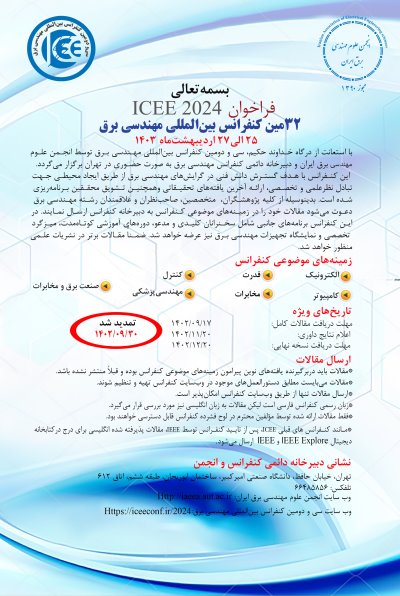0% Complete

نویسندگان :
کلمات کلیدی :
چکیده :
لیست مقالات بایگانی شده
Ehsan Borhani nia - Amir Mohammad Hoseini
Nooshin Afzali - Mohammad Javad Omidi - Keivan Navaie - Naghmeh Sadat Moayedian
Mehrdad Bagheri Sanjareh - Mohammad Hassan Nazari - Narges Sadat Ghiasi - Seyyed Mohammad Sadegh Ghiasi - Seyed Hoseein Hosseinian
Mohammadreza Ganji Arjenaki - Mahdi Pourgholi
Khashayar Saremi - Bahareh Akhbari
Sara Dianat - Mehran Yazdi
Atiyeh Karimlou - Mohammad Yavari
Ali Pouresmaeil - Pegah Kakvand - Mohammad Ali Sebt
Mohammad Reza SheykhAzimi - Mohammad Reza Nayeri - Mehdi Tale Masouleh - Ahmad Kalhor
احمد احمدزاده - امیر فتحی - بهبود مشعوفی





